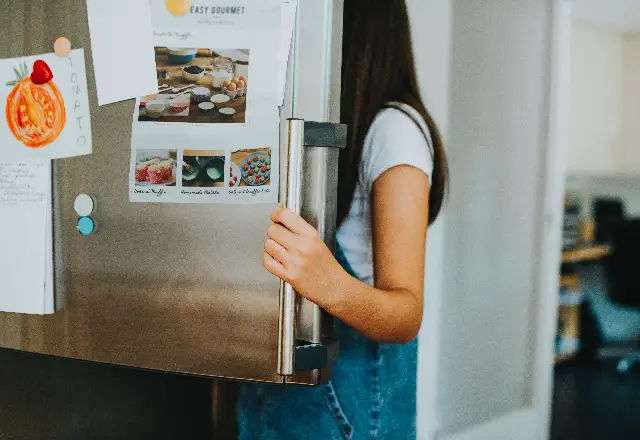Last Updated on September 23, 2022 By Emma W. Thomas
Are you curious about how much electricity you consume in your home? Well, the average American home uses about 900 kWh per month. A small house in a temperate climate might use around 200 kWh, whereas a slightly large home where air conditioning work a lot may use up to 2000 kWh in a month.
Electrical terms explained
Before we tell you how much VARh and Vah you need to maintain in your home for you to work stress-free, we need to explain some o terms so that you can understand what we are talking about. Here’s a summary of common electrical terms and their meaning:
| Kilovolt Amps (kVA) | it is 1000 volt-amps. It is the level of apparent power you consume in your home or business. |
| Kilowatt | this is 1000 watts, and it is the term used to refer to active power. |
| Watt | this is the unit of measuring active power. |
| Kilowatt-hour (kWh) | means 1000 watts per hour, and one unit of this (1 kWh) is the amount of energy that an electrical device consumes, rated as 1Kw for 1 hour. When paying bills, 1 kWh is usually a unit. |
| Watt less unit (kVArh) | refers to 1000 reactive volt-amps per hour and measures reactive or wattless power you consume. |
| Volt-ampere hours (Vah | this is apparent energy which is the sum of watt-hours (Wh) and wattless (kVArh). |
What uses the most electricity in my home?
Sometimes electricity bills can surprise you; you might wonder how you used electricity for the bills to be so high. This worsens when the temperatures are high and people are at home. Let us look at some of the appliances that use the most energy in your home.
Air conditioning and heating
Your HVAC system uses the most energy than any other equipment in your home. It amounts to an average of 46% of use in US homes. Depending on your unit’s efficiency, your HVAC can use between 28-66 kWh per day and about 850-1960 kWh in a month. To help you reduce electric bills, here are some tips:
- Use air conditioning only when necessary, for instance, at noon when it is hottest.
- Service your air conditioning regularly.
- During summer, draw your curtains and keep them open during winter.
- Dress according to season.
- Keep inside vents and outside units open.

Water heating
A water heater can consume up to 13.5 kWh a day and 405 kWh a month. This is the second-largest energy consumer in the home. To reduce spending a lot on electricity bills, here are some tips.
- Your water heater should be set at 120F or lower.
- Instead of a bath, take a shower.
- Insulate your hot water pipes and older water heaters.
- Your shower heads should be water-conserving.
Appliances
Your home appliances will consume around 13% of the average American home energy. Below, we have some tips to reduce the consumption of energy.
Refrigerator
Your refrigerator uses about 162 kWh in a single month. Reduce the energy consumption by;
- Keep products you often use in easily accessible areas.
- Do not over-pack the refrigerator.
- Use the manufacturer’s recommended temperature in the setting.
- To maintain airflow, clean behind and beneath your refrigerator.
- Replace older refrigerators with new energy-efficient ones.

Washer and dryer
These use up to 5% of energy in your home, and they consume around 3045 watts cumulatively. Here are some tips to keep in mind;
- Do not overfill the machines.
- Use cold water.
- When possible, use drying racks.
Electric oven and stove
If you use these two hours a day, you can use up to 75 kWh for the electric oven in a month and 45kWh for the stove. They can make the home warmer, thus increasing the load on your AC. To reduce the bill, keep these tips in mind.
- Use a smaller appliance such as a microwave when possible.
- Use these when the day is cool.
- Don’t preheat unless necessary.
Dishwasher
Tips to reduce primary and residual energy use include;
- Turn off heated dry.
- Wash full loads.
- Wash during cooler hours.
Lighting
A light bulb with 100-watt left on for 2 hours uses around 0.2 kWh a day. And that adds up to 6 kWh a month. Add that to the number of bulbs in your household to see how much you use. To reduce energy consumed by lighting, here are some tips:
- Use energy-efficient bulbs.
- Turn the lights off when you leave a room.
- Use natural light.
- For outside security, lights use, install motion detectors.

Media equipment
Media equipment can take up to 4% of your energy use. You can use up to 55 kWh of electricity in a single month. Tips to reduce energy use include:
- Choose activities that don’t use energy, like reading and board games.
- Reduce screen brightness.
- Deactivate standby mode.
- Turn off your electronics when not in use.
Determining the appliances’ energy estimation
How much electricity do your appliances and home electronics use? It’s important to know the amount of electricity your devices are using to help you understand how much money you are spending on them. We have given you the information below to help you estimate the amount of electricity your appliance(s) is/are using and its cost to decide whether you can invest in energy-saving appliances.
How to estimate the amount of electricity used by your appliances and home electronics?
In this part, we have discussed some of the ways you can use to measure electricity usage by your appliances and home electronics. They include;
- Electricity usage monitor. This device will help you get readings of the amount of electricity an appliance is using.
- Use of energy guide label. This label estimates the average energy consumption used by your appliances and the cost. Remember that not all devices need to have an energy guide label.
- Install an energy monitoring system for the whole house.
- You can use the formulas below to calculate the annual energy consumption and the costs.
How to calculate annual electricity consumption and costs
Below are the steps to follow when finding the yearly energy consumption of an appliance and the cost to operate it.
Estimate the number of hours an appliance runs per day
This can be done in two ways:
Keeping a log
It may be important for you to keep a usage log for some of your appliances. For example, you can record the time you are working on the computer, the time used for cooking each time you use a microwave, the time you leave light(s) on either in rooms or outdoors, or the time spent watching television.
Rough estimation
Using an appliance daily can roughly estimate how many hours you keep it in operation. For instance, if you leave your fan to run for 5 hours daily before turning it off, then use that number, or if you are watching your television for 3 hours daily, you can use that number to calculate the annual energy consumption and costs.
Find the watt of your appliances
We have three ways how you can find the wattage an appliance uses. These are:
Use of online sources.
Before purchasing your desired appliance, you can search online about its wattage and check whether it fits your needs. Sites like home energy savers and energy stars are good options to use when searching for the wattage of different appliances.
ii. Stamped on the appliances
Most of the appliances have their wattage stamped on the nameplate, at the back, or on appliances. This written wattage is the maximum amount of power drawn by the device (s). Different appliances have a range of settings; therefore, the actual amount of energy consumed will depend on the user settings.
iii. Take the appliance ampere usage, and multiply it by the appliance voltage usage
If there is no wattage listed on your appliance, don’t worry about it. You can still estimate the wattage by multiplying the electrical current drawn in amperes by the voltage used by your appliance.
Use the formula below to find the daily energy consumption
Daily KWh(Kilowatt-hour) = wattage × daily used hours÷1000
Use the following formula to find the annual energy consumption
Annual KWh = Daily energy consumption × yearly number of days
Use the formula provided below to find the annual cost required to run the appliance
The annual fee required to run the appliance = yearly utility rate per kWh annual × energy consumption.
Wrap up
Apart from answering your question, we have discussed, to be best of our knowledge, the usage of energy at home; our discussion is based on some appliances that use a lot of energy. To add to that, we gave you a breakthrough on how you can estimate electrical consumption and the cost you’ll incur when using them. We are confident enough that this article has given you what you have the best overview of energy and power, and it’ll impact positively to you.
References:
https://www.bijlibachao.com/electricity-bill/what-are-watt-kilowatt-and-a-unit-of-electricity.html
https://www.eit.edu.au/resources/fundamentals-of-smart-metering-kwh-and-kvarh-meters/
Emma is a graduate of Domestic Science or Family and Consumer Sciences (Home Economics) from the University of Wisconsin. She has 7 years of experience Working with the strategic section of BestBuy and now writing full-time for Homeeon.
From Managing the Home, Interiors, Cleaning, and Exteriors to Gardening and everything about Making A Home Liveable – is her passion and this Homeeon is the result of this.
Emma loves decorating her home with the best stuff found online. She cares about quality over anything and writes reviews about them here in Homeeon. Get in touch with her over Pinterest.
Keep reading her blogs.

